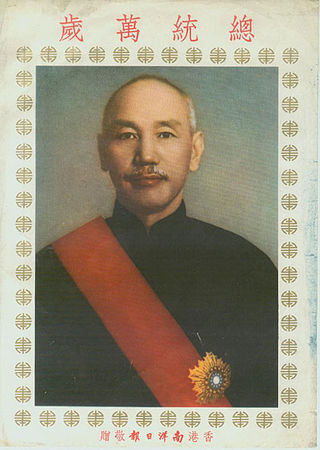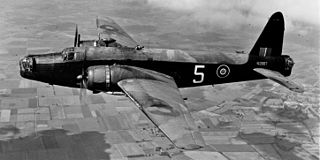
Rosie the Riveter is an allegorical cultural icon in the United States who represents the women who worked in factories and shipyards during World War II, many of whom produced munitions and war supplies. These women sometimes took entirely new jobs replacing the male workers who joined the military. She is widely recognized in the "We Can Do It!" poster as a symbol of American feminism and women's economic advantage. Similar images of women war workers appeared in other countries such as Britain and Australia. The idea of Rosie the Riveter originated in a song written in 1942 by Redd Evans and John Jacob Loeb. Images of women workers were widespread in the media in formats such as government posters, and commercial advertising was heavily used by the government to encourage women to volunteer for wartime service in factories. Rosie the Riveter became the subject and title of a Hollywood film in 1944.

The United States Office of War Information (OWI) was a United States government agency created during World War II. The OWI operated from June 1942 until September 1945. Through radio broadcasts, newspapers, posters, photographs, films and other forms of media, the OWI was the connection between the battlefront and civilian communities. The office also established several overseas branches, which launched a large-scale information and propaganda campaign abroad. From 1942 to 1945, the OWI reviewed film scripts, flagging material which portrayed the United States in a negative light, including anti-war sentiment.

Propaganda was a crucial tool of the German Nazi Party from its earliest days in 1920, after its reformation from the German Worker’s Party (DAP), to its final weeks leading to Germany's surrender in May 1945. As the party gained power, the scope and efficacy of its propaganda grew and permeated an increasing amount of space in Germany and, eventually, beyond.

Nazism made extensive use of the cinema throughout its history. Though it was a relatively new technology, the Nazi Party established a film department soon after it rose to power in Germany. Both Adolf Hitler and his propaganda minister, Joseph Goebbels, used the many Nazi films to promote the party ideology and show their influence in the burgeoning art form, which was an object of personal fascination for Hitler. The Nazis valued film as a propaganda instrument of enormous power, courting the masses by means of slogans that were aimed directly at the instincts and emotions of the people. The Department of Film also used the economic power of German moviegoers to influence the international film market. This resulted in almost all Hollywood producers censoring films critical of Nazism during the 1930s, as well as showing news shorts produced by the Nazis in American theaters.

Prelude to War is the first film of Frank Capra's Why We Fight film series commissioned by the Office of War Information (OWI) and George C. Marshall. It was made to educate American troops of the necessity of combating the Axis powers during World War II based on the idea that those in the service would fight more willingly and ably if they knew the background and the reason for their participation in the war. The film was later released to the general American public as a rallying cry for support of the war.

Propaganda in the Republic of China has been an important tool since its inception with the 1911 Revolution for legitimizing the Nationalist government that retreated from mainland China to Taiwan in 1949. Anti-communism and opposition to the Chinese Communist Party have historically been central to propaganda in the Republic of China.

The Psychological Warfare Division of Supreme Headquarters Allied Expeditionary Force was a joint Anglo-American organization set-up in World War II tasked with conducting (predominantly) white tactical psychological warfare against German troops and recently liberated countries in Northwest Europe, during and after D-Day. It was headed by US Brigadier-General Robert A. McClure. The Division was formed from staff of the US Office of War Information (OWI) and Office of Strategic Services (OSS) and the British Political Warfare Executive (PWE).

Keeper of the Flame is a 1942 American drama film directed by George Cukor, and starring Spencer Tracy and Katharine Hepburn, released by Metro-Goldwyn-Mayer (MGM). The screenplay by Donald Ogden Stewart is adapted from the 1942 novel Keeper of the Flame by I. A. R. Wylie. Hepburn plays the widow of a famous civic leader who has died in an accident. Tracy portrays a former war correspondent who intends to write a flattering biography of the dead man, only to find that his death is shrouded in mystery. Screenwriter Stewart considered the script the finest moment of his career, feeling vindicated by the assignment as he believed that Hollywood had punished him for years for his political views. Principal filming began in the last week of August 1942, four months after the release of the novel, published by Random House. The picture was filmed on a sound stage, with no location shooting. Hepburn had already begun a relationship with Tracy, and his heavy drinking led her to become his vigilant guardian during the filming.

The United States home front during World War II supported the war effort in many ways, including a wide range of volunteer efforts and submitting to government-managed rationing and price controls. There was a general feeling of agreement that the sacrifices were for the national good during the war.

The New Spirit is a 1942 American animated short film produced by Walt Disney Productions and the U.S. Department of the Treasury, and released by the War Activities Committee of the Motion Pictures Industry. The cartoon, which stars Donald Duck, was the first film created as part of Walt Disney's World War II propaganda production. It was commissioned by Henry Morgenthau Jr., then Secretary of the Treasury, to encourage American citizens to pay their income tax in support of the war effort. The film was directed by Wilfred Jackson and Ben Sharpsteen, and features Clarence Nash as the voice of Donald, Fred Shields as the radio announcer, and Cliff Edwards singing the theme song.

Pittsburgh is a 1942 American drama film directed by Lewis Seiler and starring Marlene Dietrich, Randolph Scott, and John Wayne. Based on a story by George Owen and Tom Reed, the film is about an ambitious coal miner who values wealth and power in the Pittsburgh steel industry over his friends, lovers, and ideals, only to find himself deserted and alone at the top. When his fortune crumbles around him, he discovers that fate offers him an unexpected second chance. Filmed partially on location in Pittsburgh, Pennsylvania, the film co-stars Shemp Howard of Three Stooges fame in a rare dramatic role. Dietrich, Scott, and Wayne also made The Spoilers together that same year. Scott received top billing over Wayne in both films despite the fact that Wayne's roles were larger and more important.

During American involvement in World War II (1941–45), propaganda was used to increase support for the war and commitment to an Allied victory. Using a vast array of media, propagandists instigated hatred for the enemy and support for America's allies, urged greater public effort for war production and victory gardens, persuaded people to save some of their material so that more material could be used for the war effort, and sold war bonds.

Britain re-created the World War I Ministry of Information for the duration of World War II to generate propaganda to influence the population towards support for the war effort. A wide range of media was employed aimed at local and overseas audiences. Traditional forms such as newspapers and posters were joined by new media including cinema (film), newsreels and radio. A wide range of themes were addressed, fostering hostility to the enemy, support for allies, and specific pro war projects such as conserving metal and growing vegetables.
Between 1941 and 1945, during World War II, Walt Disney and his company were involved in the production of anti-Nazi propaganda films for the U.S. government. The widespread familiarity of Disney's productions benefited the U.S. government in producing pro-American war propaganda in an effort to increase support for the war.

Aerial Gunner is a 1943 American black-and-white World War II propaganda film produced by William C. Thomas and William H. Pine, who also directed. The film stars Chester Morris, Richard Arlen, and Jimmy Lydon. This was the first feature film directed by Pine, who produced other films through his company, Pine-Thomas Productions. Aerial Gunner was distributed by Paramount Pictures.

Chance of a Lifetime is a 1950 British film directed and produced by Bernard Miles and starring Miles, Basil Radford and Niall MacGinnis. It was written by Miles and Walter Greenwood.

Nazi propaganda towards the United Kingdom changed its position over time in keeping with Anglo-German relations. Prior to 1938, as the Nazi regime attempted to court the British into an alliance, Nazi propaganda praised the "Aryan" character of the British people and the British Empire. However, as Anglo-German relations deteriorated, and the Second World War broke out, Nazi propaganda vilified the British as oppressive German-hating plutocrats. During the war, it accused "perfidious Albion" of war crimes and sought to drive a wedge between Britain and France.

Vickers Wellington LN514 was a Vickers Wellington bomber built in 1943 in record time, as part of a British propaganda effort during the Second World War.
World War II changed the possibilities for animation. Prior to the war, animation was mostly seen as a form of family entertainment. The attack on Pearl Harbor was a turning point in its utility. On December 8, 1941, the United States Army began working with Walt Disney at his studio, stationing Military personnel there for the duration of the war. The Army and Disney set about making various types of films for several different audiences. Most films meant for the public included some type of propaganda, while films for the troops included training and education about a given topic.

"We Can Do It!" is an American World War II wartime poster produced by J. Howard Miller in 1943 for Westinghouse Electric as an inspirational image to boost female worker morale.





















